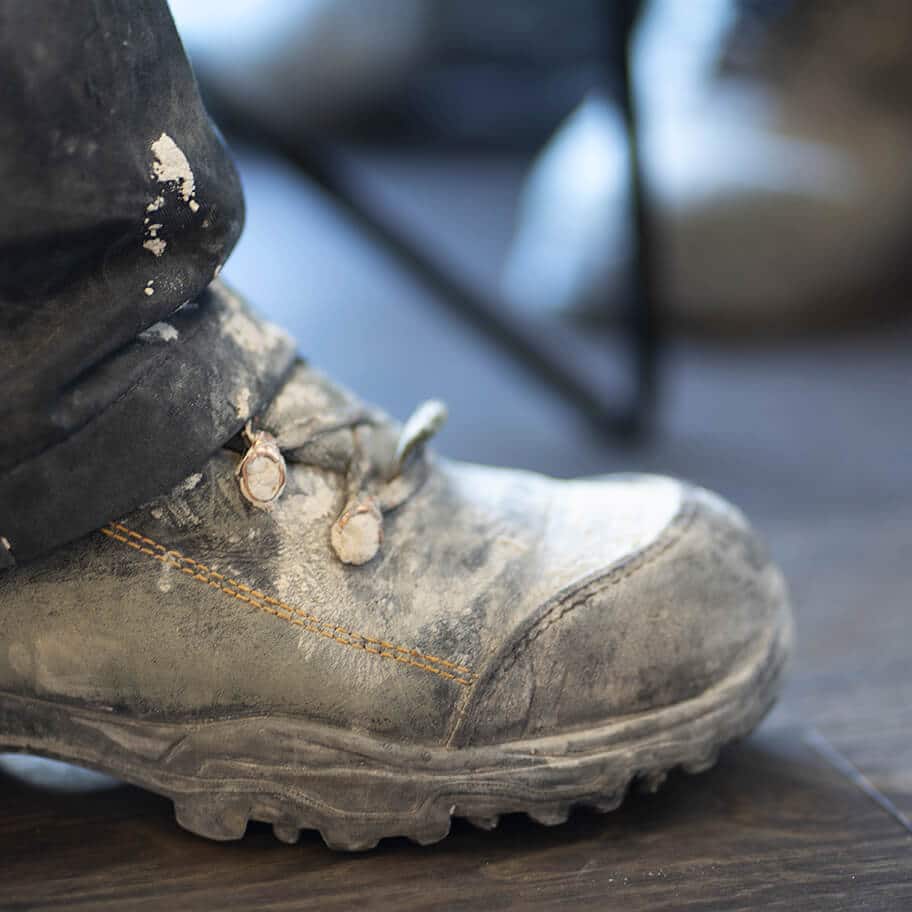Duty of Care
Appropriate footwear is required by all workers who are employed in a hazardous environment. A large number of injuries are caused by lack of footwear or incorrect protective equipment. Footwear is a basic item that will ensure the health and safety of employees in a number of different industries, such as warehouses, factories and kitchens. An employer who has not provided the correct footwear is likely to find themselves liable for any accidents or injuries sustained as a result of this.
An employer has a duty of care to ensure that an employee’s health and safety is looked after. This should be the number one priority in all industries. It is important that an employer carries out frequent risk assessments to identify and eliminate any potential hazards. This will also make them aware of the personal protective equipment that is required by their employees. Saying this, it is up to an employee to ensure that they are following regulations and wearing any equipment that is provided to them. If it is found that an employee has not followed health and safety procedures which are in place, then they will be found liable for injuries and accidents in the workplace.
PPE Regulations
There are certain regulations in place that provide for the health and safety of employees in the workplace. The first being the Safety, Health and Welfare at Work Regulations 2007. These regulations outline that protective equipment should be provided to employees in a hazardous environment. They also say that an assessment should be carried out to determine what equipment is needed and for how long it should be worn throughout the working day. It is also important that any equipment provided is maintained and kept in a good condition. It should then be replaced as soon as possible when this becomes necessary.
The European Communities PPE Regulations 1993 are in place to ensure that no PPE is placed on the market unless it complies with the health and safety standards and requirements. PPE is deemed to be satisfactory if it has the “CE Mark”. It is up to both the employer and employee to ensure that protective equipment, especially footwear, meets the standards in place, so as to reduce the risk of injury if an accident were to happen.
Common Injuries
Common injuries caused by work footwear include:
Common Causes
Lack of Correct Footwear
If you are not wearing the correct footwear it is likely that injuries will be sustained if an accident does happen. If you work in a potentially hazardous environment it is very important that you take the necessary precautions to ensure that your own health and safety is a priority.
Long Periods of Standing
Standing for an extended period of time in uncomfortable or unsuitable footwear can lead to a number of injuries. An employer who knows that their employees will be standing for a long time throughout the day should ensure that they are given frequent rest periods and should reduce the amount of time they are carrying out the same tasks.
Slips, Trips and Falls
Those who work in an environment where there are a lot of liquids or slippery surfaces should be provided with non-slip shoes. Studies have found that non-slip shoes had reduced the amount of slip and fall accidents in a manufacturing plant to zero.
Misuse of Equipment and Machinery
Incorrect use of machinery could cause a number of accidents. If a piece of equipment was dropped or something flew from the machinery as a result of negligence then it could cause a foot injury as a result of dangerous practice and procedures in the workplace.
Debris and Hazards on the Floor
Hazards should be identified in a risk assessment carried out by an employer. If these risks are not eliminated, they can lead to a foot injury if the correct footwear is not worn. Depending on the work being carried out, an employer should provide employees with the right equipment.
Falling Objects
If falling objects were to fall on the foot it could cause injury. It is important that if there is a risk of falling objects, such as in storerooms and warehouses, that steel cap boots are worn.
Hot Surfaces
Walking on a hot surface in the incorrect footwear can lead to burns. It is important that the correct footwear is worn if you are working around hot surfaces and materials. Cold surfaces can also cause chilblains in the feet.
What to do after an accident at work*?
Following an accident at work, there are a number of steps you should follow:
-
Seek medical attention
Your health is your wealth and should be your first priority. Immediately after an accident at work, take a second to assess yourself to determine if you have any injuries and seek the relevant medical attention. If you have sustained a serious injury ensure that you contact an ambulance to attend the scene.
For minor injuries, you must remember that minor injuries where you ‘feel fine’ could progress to more serious injuries in the future. In this case it is always better to be safe than sorry and advisable that you go to your nearest accident and emergency (A&E) or local GP to be checked out.
-
Report the accident
It is critical to report the accident to your superior, i.e. a supervisor or manager on site. It doesn’t matter how small you think the accident may be. By law, accidents at work are required to be reported if the person is injured and can’t perform their daily work tasks for more than three days. Make sure to fill out an Accident Report Form. This can be used for reference in any medical examination and will also prevent any similar accidents from happening in the future.
-
Identify any witnesses
If possible, try to collect the contact details of anybody that witnessed your accident. This may be of use if you do decide to pursue a workplace accident claim. It is also useful to find out if there is any CCTV in the area where your accident happened.
-
Document the incident
It is important that you collect all the relevant information in connection with your accident:
- How the accident happened
- Details of any witnesses
- If there are any CCTV recordings of your accident
- Take pictures of where the accident happened and what caused your accident
-
Speak to a workplace accident solicitor
If you are considering moving forward with a workplace accident claim for any personal injuries sustained, it is advisable that you speak with a workplace accident claims solicitor as soon as possible. If you are proceeding with a claim, the first step will be submitting your claim to the Personal Injuries Assessment Board (PIAB) for assessment. A workplace accident solicitor can help you in preparing your application to the Personal Injuries Assessment Board (PIAB) and ensure that you follow the process in the correct format, meaning that you can move forward with your claim quickly without unnecessary delays.
It is important to remember to keep copies of any expenses that you have incurred as a result of the accident. It is also imperative to retain copies of medical reports or incident report forms where possible as you will need them when making a claim.

